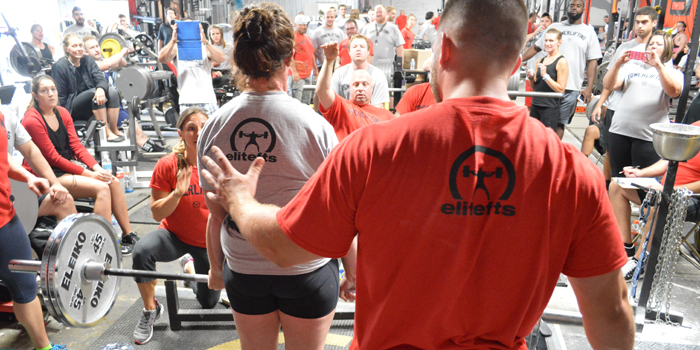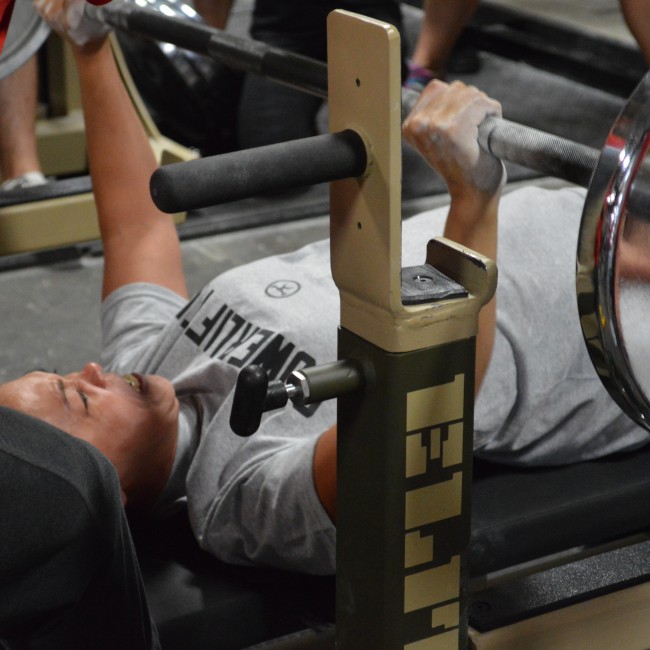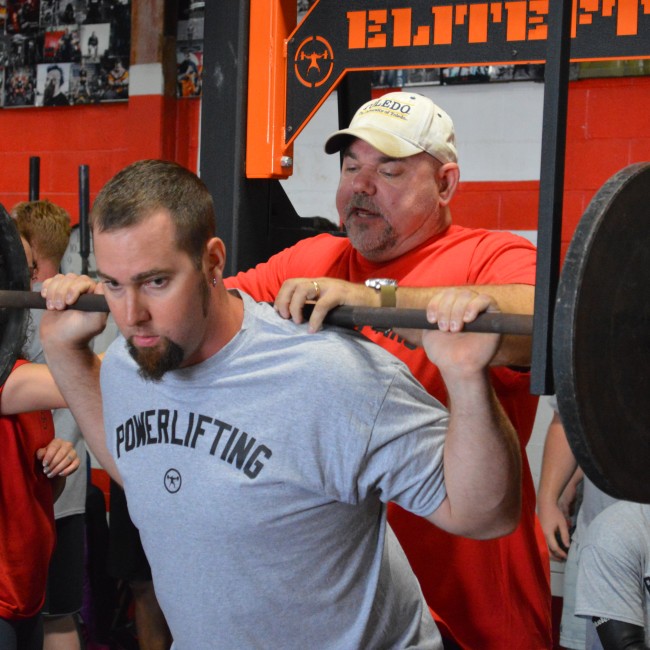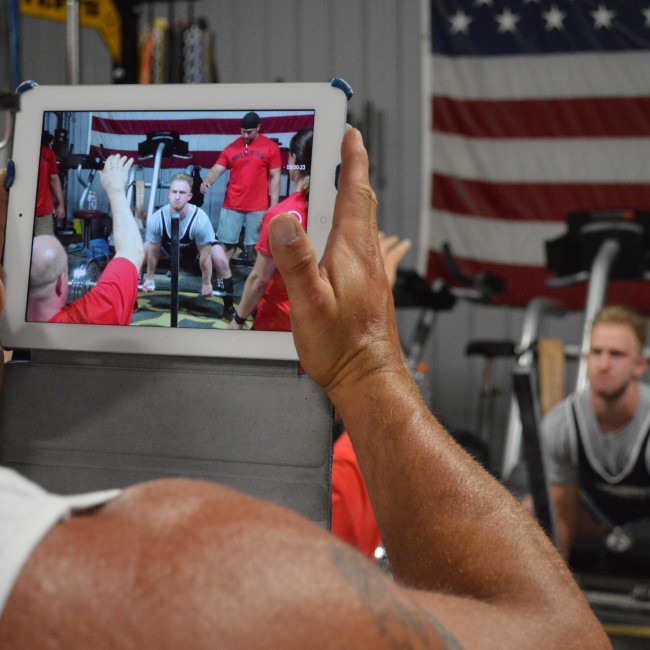
In my previous article, I discussed how to make some adjustments to the Westside Barbell method to bring up a weak lift while keeping the other lifts strong. In this article, I'll take an even closer look at how to gain strength. I don’t like reading long and confusing articles. I’m just a lifter, so I'll keep things simple.
Below are ten training points that I believe are vastly important for increasing the squat, bench and deadlift.
Five Things to Boost Your Bench
1. Do close grip pressing: Use any angle. It doesn’t matter if it’s to a board with bands or chains added. The point is you should be doing some kind of close grip pressing. "A close will build a wide, but a wide will not build a close." — Louie
2. Press dumbbells: To press big weight, you need cannonball delts and a pair of man-sized chesticles. There’s no other way around it. Just look at any big bencher.
3. Use speed/paused work: Pick your poison for that pop off the chest. I highly recommend that you pause everything anyway, especially dumbbell presses. This is something that Jim Wendler mentions briefly in his book 5/3/1—a small tweak but noticeable results.
4. Do your overload work: About once a month, you should handle a weight heavier than your max. Use a bench shirt, slingshot, three-board with bands or whatever. Also, taking heavy weight to the chest every week isn't a great idea in the long run.
5. Grow some triceps: There’s only so much weight that your 15-inch pipes can lockout, so build some muscle.
Five Things to Increase Your Squat/Deadlift
1. Go beltless: As a raw lifter, a belt is your equipment. But remember, geared lifters don’t train in full gear all the time. If you use a belt too often, your core won't be as strong as it should be. Go through phases of training beltless or simply go without it every third lower body session. Reduce the weights accordingly. Wean into it by doing beltless supplemental work and then try going beltless on the main work, both max effort and dynamic effort.
2. Squat without knee wraps: As mentioned in my last point, if you use them too often, eventually you'll come to rely on them for that pop out of the hole. Don’t use them as a crutch; build strong starting strength without them.
3. Do speed/paused work: Again, it all starts from the bottom, so learn to start fast and finish strong. New lifters may benefit more from plyometrics. A lifter must develop kinaesthetic awareness and learn to be explosive with his own body before he can effectively do it with a barbell.
4. Do overload work: About once per month, you should handle a weight heavier than your max. Use briefs, bands, chains, a high box or whatever. You need to get your body used to heavier weights and perhaps, more importantly, get your eyes used to seeing them, too.
5. Build some squatting muscle: If you don’t have much trouble finding a pair of jeans to fit into, you aren't big enough. The easiest way to squat 500 is to weigh 200.
How you choose to program all that is up to you. You can refer to the chart in the previous article for a little help. For me, making the program is half the fun anyway.
Simple Supplemental
You should believe in the effectiveness of the main lifts you choose, as these are the lifts that will most contribute to your success. These are the lifts that you have chosen to make your competition lifts stronger. To become stronger in a movement, you need to manage the volume. Simply put, if you know that the floor press builds your bench press, do more floor pressing.
You don’t necessarily ‘need’ a special supplemental exercise in each training session, especially those early on in their training careers who would benefit more from staying close to the competition lifts. After all, practice makes perfect.
The optimal way to warm up for a max effort lift involves small jumps in weight and low reps. Energy is saved for the max weights, but we don’t get much volume in this way.
Back Down Sets and Raw Gear
You don’t need to complicate your supplemental work for it to be effective. There is an easier way to get stronger. You can simply do multiple back down sets and count that as your supplemental work. After the main movement on max effort or even dynamic effort day, simply perform one or two ‘back down’ sets with the same movement to get some more volume in. However, this may not apply to everyone. As you get stronger, your training will need to become more specialized.
I'll use 70 percent for 8–10 reps or, even better, I'll go beltless and use 60 percent for 8–10 reps. Beltless back down sets have become a favorite of mine in recent times. It took my five-rep max sumo deadlift from 200 kg to 220 kg in four months in the 82.5s. Very simple but a really effective way to get stronger. It's less to think about and it will also save you time setting up another exercise. Of course, you can make minor adjustments to the exercises to get the most out of them for your individual needs, preferably something that makes the lift more challenging. Use the ‘train hard, fight easy’ principle.
Bench press and variations:
- Paused reps/touch and go reps
- No arch/feet up
- Varied grip (wide, medium, close)
Squat/deadlift and variations:
- Touch and go/paused (This also applies to the deadlift, where you pull from the floor, pause below the knee and then finish the pull—as if deadlifts weren’t hard enough already.)
- Deficit/low box/ATG
- No belt/no wraps/no straps
Don’t be fooled. Small changes can make a big difference over time. Similarly, by wearing straps for max effort lifts on the deadlift, you may be able to progress and recover faster between sessions, as the deadlift is very taxing. Wearing straps will prevent any imbalances, and you will also be at much less risk of tearing a bicep. Consider wrist straps another piece of your equipment like the belt and knee wraps.
Many top deadlifters, especially Strongmen, wear straps and they are often some of the best deadlifters you'll find. If you're worried about grip strength, simply perform one or two back down sets without them after the main work. You get bonus points for using a double overhand grip and going beltless.
Mental Strength
In my previous article, I said that I wouldn’t go into the technical or mental aspects of training. But I see this all too often. People put in half efforts, skip stuff, make weak excuses and enable the other weak people around them. The part-timers, seasonal gym goers, gym bros or whatever you want to call them—they suck and they’re killing your progress.
Surrounding yourself with these people and that poisonous atmosphere are the worst things you can do for your training. Do whatever it takes. Change gyms and dump your training partners. Sure, you may upset some people in the process, but nothing worth achieving is without sacrifices. Surround yourself with people who are bigger and better than you.
It takes great mental strength to become strong. Big weights scare people. There will be setbacks. Life will get in the way, and a meet will go bad. But there is always another meet, so stay hungry. And remember, there is always more to learn.
Gareth Williams served with the 1st Battalion Royal Irish regiment in Afghanistan in 2011. Shortly after his return, he was lucky enough to stumble on elitefts.com™, where he found powerlifting along with a wealth of information. It has since become a huge passion of his and he hasn't looked back.













5 Comments